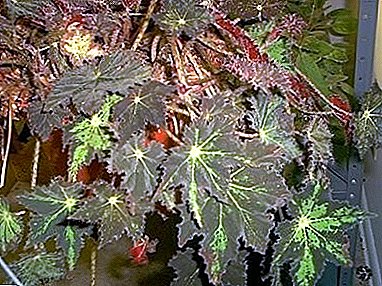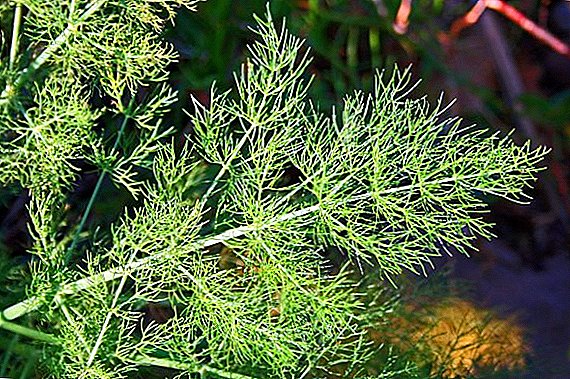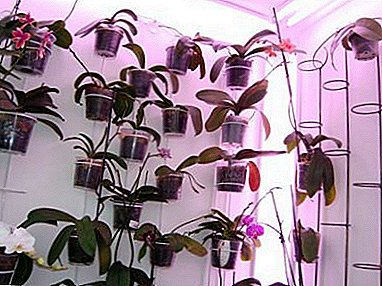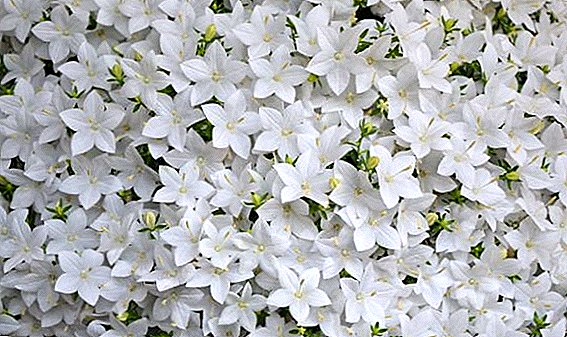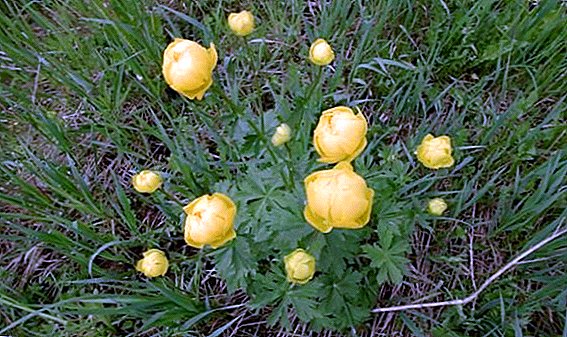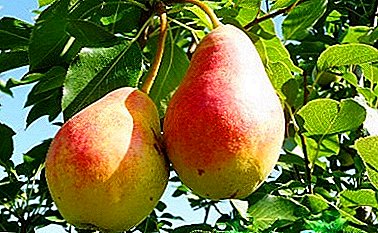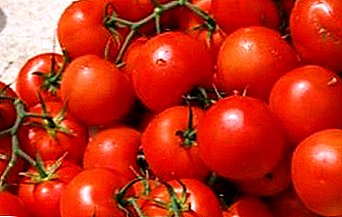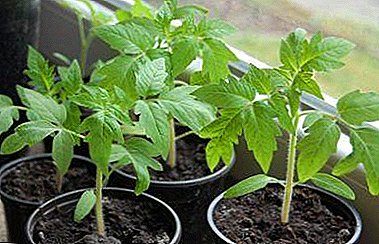
The responsible stage of preparation for the cultivation of seedlings from tomato seeds begins in late winter - early spring.
It was during this period that amateur or professional gardeners made the purchase or preparation of soil, seeds, and artificial lighting devices for future seedlings.
The most practical and creating favorable conditions for obtaining a good crop of tomatoes, among many others, is the cultivation of seedlings in cups.
The essence of the method
Tomato seeds are planted in insulated small containers.. Seedlings will be in them until the planting in open ground. Subject to the use of this method, dive seedlings are not required.
Virtues
 Greater air access to the roots of seedlings.
Greater air access to the roots of seedlings.- Reducing the negative impact of too much watering.
- No interweaving of roots of neighboring plants. Separation of intertwined roots when planted in open ground creates a risk of mechanical injury to the roots.
- The possibility of growing seedlings without additional transplantation (dive) in a larger container.
- In case of a disease of the root system of a single plant, the infection does not spread to others, its effect is limited to a glass.
disadvantages
- The need for continuous monitoring of the adequacy of soil moisture (in the case of peat containers).
- There is a low quality of materials used in the manufacture of peat cups (too high a percentage of paper, which, when transplanted into open ground, will block access of moisture and nutrients to the roots).
If the first decade of May is characterized by a steady onset of heat, you need to return 65-70 days ago on the calendar - this will be the optimal time for planting seeds using this technology.
What size and type should be the container?
A very common use for the cultivation of tomatoes cups of peat moss (peat moss provides reliable protection of roots from rotting). A tomato seedling is planted in open ground with a glass.
You can use containers made by yourself. The most convenient - plastic cups. The optimal volume is 500 ml, this will allow not to make a dive, when using cups with a volume of 100 ml, tomatoes are grown until 2-3 leaflets appear. You can cut to the required volume and a plastic bottle, suitable small cardboard boxes of milk.
The main condition when using plastic or other improvised containers: holes should be made at the bottom to avoid accumulation of excess liquid after watering the plants. When landing in the ground seedlings are taken along with the soil from the glasses.
Seed preparation stages
- Rejection.
- Disinfection.
 Approximately one day before planting the seeds, they are rejected. This action is mandatory if the seeds that were harvested 3-4 years ago will be used. Provided that the seeds prepared for planting are fresh, the process of grading is optional.
Approximately one day before planting the seeds, they are rejected. This action is mandatory if the seeds that were harvested 3-4 years ago will be used. Provided that the seeds prepared for planting are fresh, the process of grading is optional.
- For the selection of high-quality seeds it is necessary to pour half a glass of water, pour into it and dissolve a teaspoon of salt.
- Pour the seeds into the solution and leave them for 10 minutes.
- Floated seeds of the desired yield will not give, they are safely discarded.
- The remaining seeds are washed from the salt, they are planted in cups in 2 ways: swollen or dry.
Regarding the best of the ways, the opinions of gardeners diverge. Since the seeds will germinate in quite favorable temperature conditions, you can plant them dry.
To swell the seeds before planting, they are poured onto a plate with a cloth moistened with water, covered with a transparent lid and kept for 24 hours.
For disinfection, seeds are treated with manganese.. 1-2 crystals are dissolved in water at room temperature so that the water is barely colored, and seeds are soaked in it for 15 minutes.
Selection of soil for tomatoes
When choosing the soil in the store, be sure to pay attention to the presence of phosphorus, nitrogen and potassium in its composition in the amount of 400 mg / l. Otherwise, nutrition of tomato seedlings will not be sufficient.
Soil can be prepared at home. To do this, mix 70% of the land, 15% of sand, fine ash, peat (sawdust), 15% of humus.
To eliminate the effects of microbes contained in the ground on the seedlings, the soil is disinfected: heated in an oven at high temperature for 60 minutes or poured with boiling water. After the procedure, the soil is again watered and stored for 14 days. before use in heat.
How to plant seeds?
- To fill the soil in the prepared containers, slightly to press. The volume that should occupy the soil - 2/3 of the volume of the glass.
- Watering.
- The distribution of seeds in the tank (2-4 pieces / cup):
- pour 1-1.5 cm of soil over the seeds, pour;
- cover the containers with seeds of polyethylene to retain moisture;
- When germs appear, transfer the cups to a place with good light. Light does not play an important role before seed germination.
How to grow seedlings?
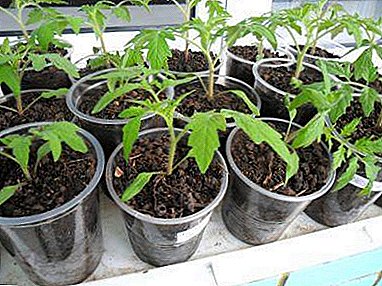 When the first shoots appear, it is necessary to provide a small round-the-clock coverage.
When the first shoots appear, it is necessary to provide a small round-the-clock coverage.- There are no special requirements for the irrigation process, the soil should always be moderately wet, and sprout sprouts from the sprayer periodically.
- Every day, it is desirable to turn the seedlings to sunlight by the other side so that the seedlings do not twist.
- When establishing warm weather, young shoots need to be taught to the temperature conditions of the open ground: initially maintain cups with saplings for 10-15 minutes on the balcony, gradually increasing this time.
- Once every two weeks, fertilizing is added to the cups with seedlings: urea, potassium salt and Superphosphate are mixed in 1 liter of water (0.5 g, 1.5 g, 4 g, respectively). The second time is fertilized with this mixture: 4 g of Superphosphate, 0.6 g of ammonium nitrate and 2 g of potassium sulphate are added to a liter of water. The composition of the third feeding includes only urea.
The method of growing tomatoes in cups significantly saves the time of growing seedlings; it is convenient and simple, and therefore suitable for those who are just beginning to understand the issues of crop production. At observance of the rules set forth above and the attentive relation to a plant, the crop will please with the abundance and taste.


 Greater air access to the roots of seedlings.
Greater air access to the roots of seedlings. When the first shoots appear, it is necessary to provide a small round-the-clock coverage.
When the first shoots appear, it is necessary to provide a small round-the-clock coverage.